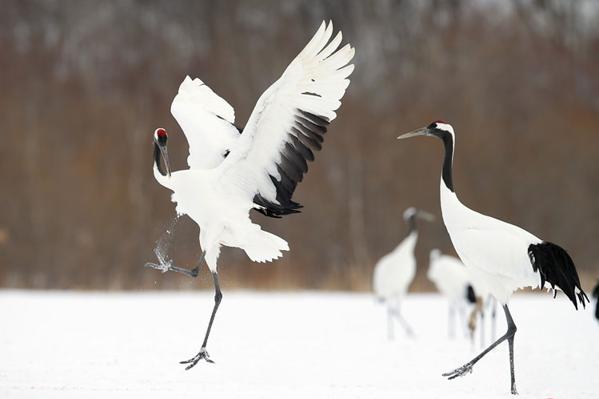
Red-crowned cranes are among the world’s rarest birds and are primarily white with a patch of red bare skin on the crown. They let out sonorous calls and are often seen in wetlands and among reeds. In spring they usually breed in Heilongjiang province with the breeding season from April to June. Red-crowned cranes are monogamous and its lifespan is around 50 to 60 years, hence the name Xian He (crane of the immortals). The species can be found in northeastern China, eastern Mongolia, east of the Wusuli River in Russia, North and South Korea and Hokkaido in Japan.[Photo by Gu Xiaojun/For chinadaily.com.cn]
Gu Xiaojun, a member of the China Photographers Association, has been taking photos of wild whooper swans since 1992, and he decided to focus on photographing birds and has traveled to many bird protection zones around the country.
Gu said he has learned a great deal about birds as he has spent so much time capturing images of them, and he thus often gives talks on birds. He also said people in his local community are now very interested in bird photography, and they are aware of bird conservation issues.

Black-faced spoonbills are endangered migratory birds and are rarely seen. They spend winters in Hainan and Guangdong. They are vigilant and easily frightened so are hard to observe in the wild.[Photo by Gu Xiaojun/For chinadaily.com.cn]

Steller’s sea eagle is a large bird in the family Accipitridae. Its length can range from 90 to 100 cm with a wingspan of between 203 and 250 cm and weight from 5 to 10 kg. It nests along sea coasts and large rivers, sometimes following the river to inland areas. It flies slowly and usually glides and circles in the sky. It’s commonly seen standing on rocky outcrops, at the top of large trees and on sand dunes.[Photo by Gu Xiaojun/For chinadaily.com.cn]
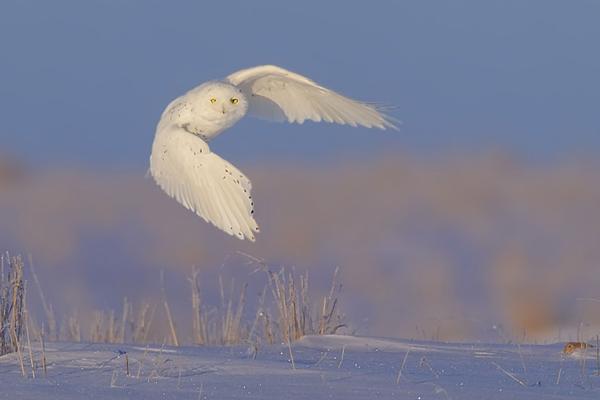
The snowy owl is white. It nests in frozen soil and tundra and can be found on dunes. It feeds on rodents, birds and insects. It breeds in the Arctic and Siberia, and winters in northern China, but it’s rarely seen. Snowy owls can be active during both the day and nighttime. It builds nests on rocks and lays 12 eggs annually.[Photo by Gu Xiaojun/For chinadaily.com.cn]
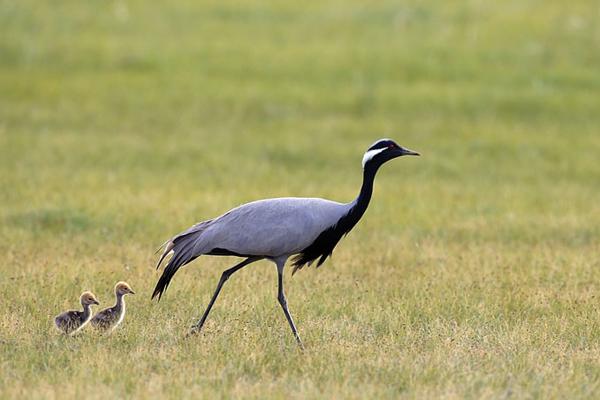
The mother crane and her nestlings. The demoiselle crane is found in pairs only in the breeding season. At other times it lives in a tribe or small group, sometimes, it can even be found single. It’s timid and vigilant, good at running and lives far away from humans. Demoiselles rarely flock with common cranes. In spring, they reach the breeding grounds in west Jilin in the middle of March. From the end of March to early April, they’ll be in Heilongjiang and Hulun Buir League in Inner Mongolia. In autumn, they flock south in small groups or as a tribe in later October. They feed mainly on small fish, shrimps, frogs, tadpoles, aquatic insects, tender shoots, leaves, grass and crops. The demoiselle crane is rare in China.[Photo by Gu Xiaojun/For chinadaily.com.cn]
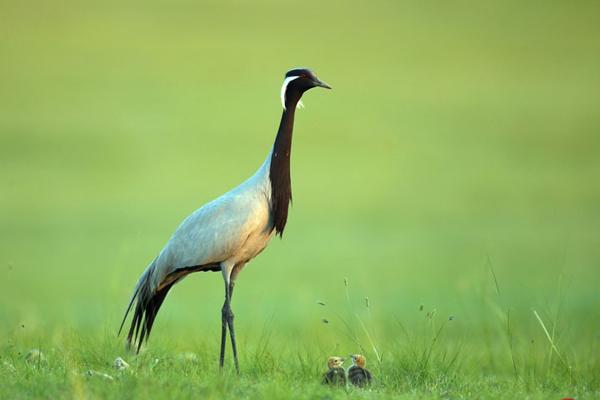
Demoiselle crane mother and nestlings[Photo by Gu Xiaojun/For chinadaily.com.cn]

Demoiselle crane mother and her nestling[Photo by Gu Xiaojun/For chinadaily.com.cn]
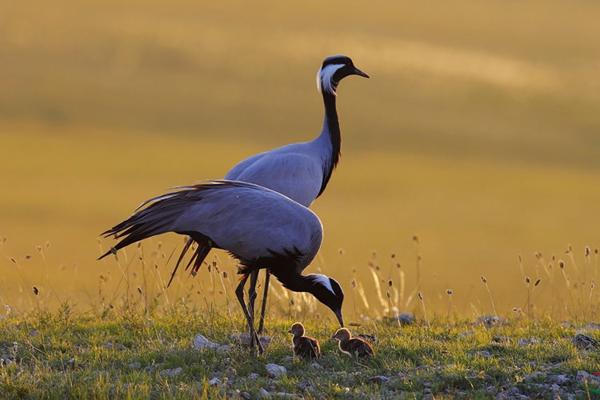
A Demoiselle crane family[Photo by Gu Xiaojun/For chinadaily.com.cn]
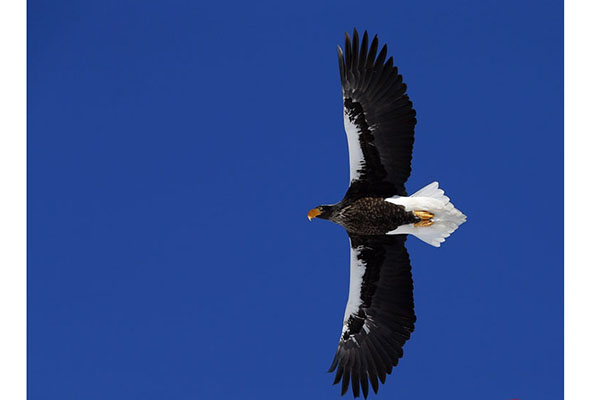
Steller’s sea eagles fly in groups during winter and it’s the largest bird to be seen. It mainly feeds on fish. It’s distributed over a small region and its population is tiny, with only 6,000 to 7,000 in the world. It’s even rarer in China where it’s under first class state protection.[Photo by Gu Xiaojun/For chinadaily.com.cn]
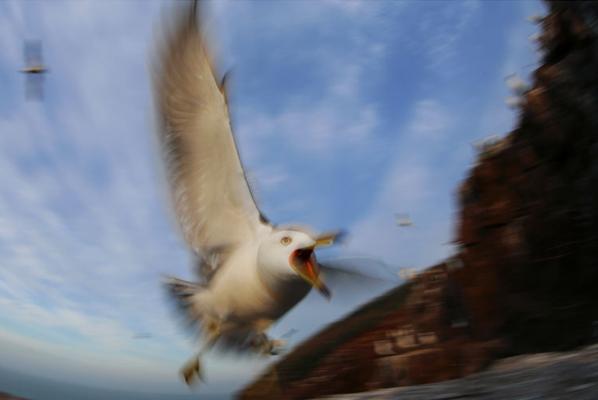
Black-tailed gulls nest near islands, the sea shore with exposed rocks and inland waters. It feeds mainly on fish and crustaceans. It also follows ships and eats discarded food. Its breeding season is from May to July and it builds its nest on cliffs and in woods. Its nest is like a bowl with 2 to 4 eggs. It breeds along the coast of Guangdong and Fujian provinces and winters along the coast of south and east of the Chinese maindland and Taiwan. It can also occasionally be found in Yunnan province.[Photo by Gu Xiaojun/For chinadaily.com.cn]
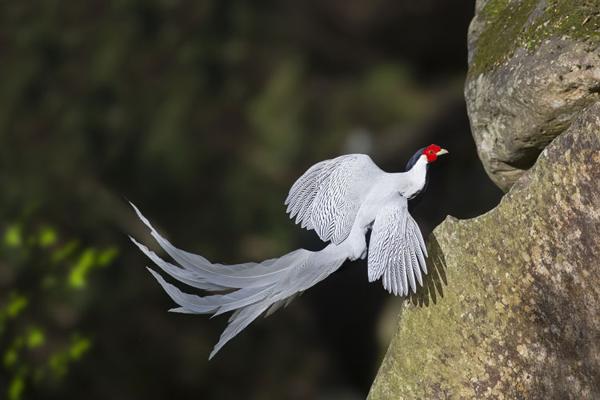
The silver pheasant is found in forests, sparse vegetation of evergreen broad-leaved forests and tropical ravine rainforests. It feeds on insects together with the stalks, fruits and seeds of plants. It moves around in pairs or small groups of 3 to 6. It’s vigilant and rarely flies. In emergency it will fly to tree branches. Silver pheasants nest on low ground among bushes, with 4 to 6 eggs a brood. The chick matures early and is able to follow its parents on the very day it hatches. Its distribution is in China, Cambodia, Thailand and the Indo-China peninsula.[Photo by Gu Xiaojun/For chinadaily.com.cn]

Most owls are nocturnal, rest in the daytime and are active in the night. Owls have sharp vision, their night sight is more than one hundred times better than that of humans. Unlike other birds, owls’ eggs hatch one by one. After the first egg is laid, it starts to hatch. They feed mainly on rodents but insects, small birds, lizards and fish are also on the menu.[Photo by Gu Xiaojun/For chinadaily.com.cn]
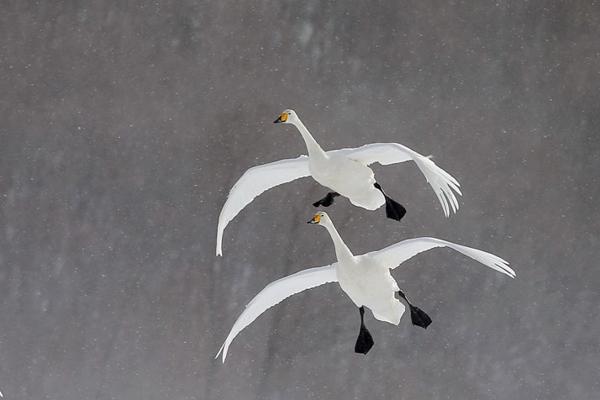
The swan is migratory bird. It nests near lakes and swamps and feeds mainly on submerged plants. Every year, during March and April, it flocks in large numbers from south to north, and breeds near the northern borders of China. Females usually lay 2 to 3 eggs in May. Females brood while males stand guard nearby. After October, swans will flock south and winter in a warmer climate.[Photo by Gu Xiaojun/For chinadaily.com.cn]

The collared scops owl is usually found single, except during the breeding season. The species is nocturnal and usually hides in well-wooded areas during daytime. It becomes active when night falls and usually makes deep calls. It flies silently with agility. It feeds mainly on rodents, beetles, locusts and insects.[Photo by Gu Xiaojun/For chinadaily.com.cn]
